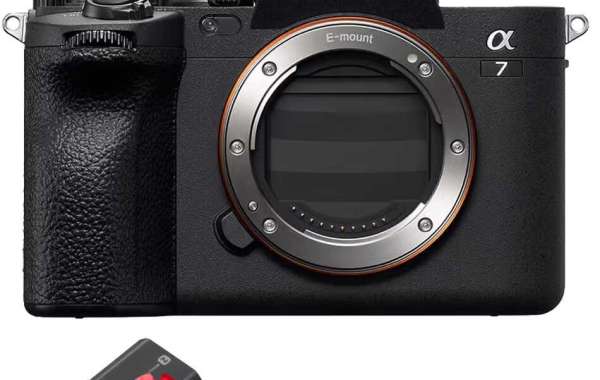Introduction
Wildlife photography is a captivating pursuit that allows us to connect intimately with the natural world, capturing moments of raw beauty and elusive behaviors that define the animal kingdom. In this digital age, advancements in camera technology have revolutionized the way we approach wildlife photography, empowering enthusiasts and professionals alike to push creative boundaries and capture stunning images with unprecedented clarity and detail.
Among the frontrunners in this evolution is Sony, renowned for its innovative mirrorless cameras that excel in capturing fast-paced wildlife scenes with precision and depth. Whether you're tracking a majestic eagle in flight or patiently waiting for a rare big cat to emerge from the shadows, Sony cameras offer a toolkit of features designed to enhance your photographic journey.
In this comprehensive guide, we delve into the essential techniques, gear choices, and ethical considerations that define successful wildlife photography with Sony cameras. From selecting the right equipment to mastering advanced shooting techniques and preserving the integrity of wildlife habitats, this guide aims to equip you with the knowledge and inspiration needed to elevate your wildlife photography skills to new heights.
Join us as we explore how to harness the power of Sony cameras to capture nature's beauty in its purest form, one frame at a time.
Choosing the Right Sony Camera for Wildlife Photography
Choosing the right Sony camera is crucial for wildlife photography, where capturing fast-moving subjects with clarity and precision is paramount. Sony offers a range of mirrorless cameras known for their cutting-edge technology and performance capabilities. Here's a breakdown to help you select the best Sony camera for your wildlife photography needs:
- Sony Alpha a9 II
- Overview: Known for its unparalleled speed and autofocus capabilities, the Sony Alpha a9 II is ideal for capturing wildlife action with precision.
- Key Features:
- 20 frames per second (fps) continuous shooting with no blackout.
- Advanced 693-point phase-detection autofocus system with real-time Eye AF.
- High-resolution 24.2 MP full-frame sensor for detailed images.
- Why Choose: Perfect for fast-moving wildlife such as birds in flight or running animals.
- Sony Alpha a7R IV
- Overview: Renowned for its high-resolution sensor and impressive image quality, the Sony Alpha a7R IV excels in capturing detailed wildlife shots.
- Key Features:
- 61 MP full-frame Exmor R CMOS sensor for exceptional detail and dynamic range.
- Enhanced 567-point phase-detection autofocus system with real-time Eye AF.
- 10 fps continuous shooting with autofocus tracking.
- Why Choose: Ideal for wildlife photographers who prioritize high-resolution images and flexibility in post-processing.
- Sony Alpha a1
- Overview: Sony's flagship camera, the Alpha a1, combines speed, resolution, and video capabilities for versatile wildlife photography.
- Key Features:
- 50.1 MP full-frame stacked Exmor RS CMOS sensor for outstanding image quality.
- Up to 30 fps continuous shooting with blackout-free shooting.
- 8K video recording and 4K recording at 120 fps for high-quality video capture.
- Why Choose: Offers the ultimate performance in both stills and video, suitable for capturing diverse wildlife scenarios.
Considerations for Lens Selection:
- Pairing your Sony camera with the right lens is crucial. For wildlife photography, consider telephoto lenses such as the Sony FE 100-400mm f/4.5-5.6 GM OSS or the Sony FE 200-600mm f/5.6-6.3 G OSS for capturing distant subjects with clarity and detail.
- Fast and accurate autofocus capabilities are essential when choosing lenses, ensuring you can track and capture wildlife subjects effectively.
Selecting the right Sony camera for wildlife photography depends on your specific needs, from speed and autofocus capabilities to resolution and video features. Evaluate your shooting style and the types of wildlife you photograph most frequently to determine which Sony camera best suits your requirements.
Essential Gear and Settings for Wildlife Photography
Capturing stunning wildlife photographs requires not only a skilled eye and patience but also the right gear and settings. Here’s a comprehensive guide to the essential equipment and optimal camera settings for successful wildlife photography with Sony cameras:
Essential Gear
- Camera Body
- Choose a Sony mirrorless camera known for its fast autofocus and high-resolution sensor, such as the Sony Alpha a9 II, Sony Alpha a7R IV, or Sony Alpha a1.
- Lenses
- Telephoto lenses: Select lenses with a long focal length (e.g., 100-400mm, 200-600mm) for capturing distant wildlife subjects.
- Fast aperture: Lenses with wide apertures (e.g., f/2.8, f/4) allow for better low-light performance and background isolation.
- Tripod or Monopod
- Stability is crucial for sharp wildlife images, especially in low-light conditions or when using longer lenses.
- Memory Cards
- High-speed, large-capacity SD or CFexpress cards to handle continuous shooting and high-resolution files.
- Additional Accessories
- Lens hood: Minimizes lens flare and protects the lens.
- Remote shutter release: Reduces camera shake during long exposures or remote shooting.
- Weather-sealed camera bag: Protects gear from dust, moisture, and unexpected weather conditions.
Camera Settings
- Shooting Mode
- Aperture Priority (A or Av): Allows control over depth of field; ideal for isolating subjects from their background.
- Shutter Priority (S or Tv): Useful for freezing motion in fast-moving wildlife.
- Autofocus Settings
- Continuous AF (AF-C): Tracks moving subjects continuously.
- Wide-area AF: Ensures the camera can maintain focus across a larger area, crucial for unpredictable wildlife movements.
- Animal Eye AF: Utilizes advanced AI to track and focus on animal eyes, ensuring sharp portraits.
- ISO
- Use the lowest ISO setting possible to maintain image quality, adjusting as necessary in low-light conditions.
- Shutter Speed
- Set shutter speed according to the movement of your subject:
- Fast shutter speed (1/500s or faster): Freeze fast-moving wildlife.
- Slower shutter speed (1/125s or slower): Convey motion blur for creative effects.
- Exposure Compensation
- Adjust exposure compensation to compensate for challenging lighting conditions or to achieve the desired exposure.
- White Balance
- Choose the appropriate white balance setting (e.g., daylight, cloudy) to accurately capture natural colors.
Equipped with the right gear and camera settings, you’re ready to embark on your wildlife photography journey with Sony cameras. Experiment with different techniques and adapt your settings to capture the beauty and behavior of wildlife in its natural habitat. Remember, patience and understanding of your equipment will help you achieve remarkable wildlife photographs.
Techniques and Tips for Stunning Wildlife Shots
Capturing stunning wildlife photographs goes beyond having the right gear—it requires patience, observation, and an understanding of animal behavior. Here are essential techniques and tips to help you elevate your wildlife photography with Sony cameras:
1. Understanding Animal Behavior
- Research and Observation
- Study the habits and habitats of your subjects beforehand.
- Anticipate their movements and behaviors to better position yourself for the shot.
- Patience is Key
- Allow wildlife to acclimate to your presence.
- Be prepared to wait for the perfect moment to capture natural behaviors.
2. Composition and Framing
- Rule of Thirds
- Place your subject off-center to create a more dynamic composition.
- Consider the background and foreground elements to add context and depth to your shot.
- Framing Techniques
- Use natural frames (e.g., branches, foliage) to draw focus to your subject.
- Experiment with different angles and perspectives to capture unique viewpoints.
3. Lighting and Weather Considerations
- Golden Hours
- Shoot during early morning or late afternoon for soft, warm light.
- Avoid harsh midday sunlight to prevent harsh shadows and overexposure.
- Weather Effects
- Embrace changing weather conditions (e.g., rain, fog) for dramatic and atmospheric shots.
- Use reflections and moisture to enhance textures and colors in your photographs.
4. Using Sony Camera Features Effectively
- Autofocus Tools
- Utilize Animal Eye AF for precise focus on wildlife subjects.
- Experiment with tracking modes to maintain focus on moving animals.
- Burst Mode and Continuous Shooting
- Capture fast-paced action with burst mode and high-speed continuous shooting.
- Select the appropriate frame rate to match the movement of your subject.
5. Creative Techniques
- Depth of Field
- Experiment with shallow depth of field to isolate your subject against a blurred background.
- Use smaller apertures for greater depth of field to capture detailed wildlife habitats.
- Motion Blur
- Intentionally blur backgrounds or certain parts of the subject to convey movement and action.
- Adjust shutter speed to control the amount of blur and emphasize the dynamic nature of wildlife.
6. Ethics and Respect for Wildlife
- Responsible Photography
- Respect wildlife habitats and behavior; avoid disturbing animals for the sake of a photograph.
- Maintain a safe distance and use telephoto lenses to minimize intrusion.
By combining technical skills with an appreciation for wildlife behavior and natural beauty, you can capture stunning wildlife photographs that tell compelling stories. Experiment with different techniques, adapt to changing conditions, and remember to approach wildlife photography with respect and ethical considerations.
Post-Processing Tips for Wildlife Photography
Post-processing is a crucial step in enhancing and refining your wildlife photographs to bring out their full potential. Here are essential tips and techniques for effective post-processing of wildlife images captured with Sony cameras:
1. Organizing and Selecting Images
- File Management
- Use software like Adobe Lightroom or Capture One for efficient organization and management of your wildlife photo library.
- Create folders or collections to categorize images by location, species, or shooting date.
- Image Selection
- Review and select the best images that capture compelling wildlife moments and convey your intended story.
- Focus on images with sharp focus, proper exposure, and strong composition.
2. Basic Adjustments
- Exposure and Contrast
- Adjust exposure to balance highlights and shadows, ensuring details are retained in both.
- Fine-tune contrast to enhance the overall depth and clarity of your wildlife subjects.
- White Balance
- Correct white balance to ensure accurate colors that reflect the natural tones of the scene.
- Use presets or manual adjustments to adjust temperature and tint accordingly.
3. Sharpening and Noise Reduction
- Sharpening
- Apply selective sharpening to enhance details in wildlife subjects, particularly around eyes, fur, or feathers.
- Use masking to limit sharpening to areas of interest while preserving smooth backgrounds.
- Noise Reduction
- Use noise reduction tools to reduce noise in images, especially when shooting at higher ISO settings.
- Adjust luminance and color noise sliders to achieve a balance between noise reduction and retaining fine details.
4. Adjusting Colors and Saturation
- Vibrance and Saturation
- Increase vibrance to enhance subtle colors without oversaturating the image.
- Adjust saturation sparingly to maintain natural-looking colors, particularly for wildlife subjects.
- HSL Adjustments
- Fine-tune individual colors using Hue, Saturation, and Luminance (HSL) sliders to achieve desired color tones.
- Enhance or tone down specific colors to complement the mood and atmosphere of your wildlife photographs.
5. Cropping and Composition Refinements
- Crop Tool
- Use the crop tool to improve composition and remove distractions.
- Experiment with different aspect ratios to emphasize the subject or adjust framing for better visual impact.
6. Preserving Natural Look and Ethical Considerations
- Maintaining Natural Look
- Avoid over-editing that alters the natural appearance of wildlife subjects.
- Retain authenticity by preserving textures, colors, and lighting that reflect the natural environment.
- Ethical Considerations
- Maintain ethical standards in post-processing by accurately representing wildlife behavior and habitat.
- Avoid manipulating images in ways that mislead viewers or compromise the integrity of the photograph.
Effective post-processing can significantly enhance the impact and visual appeal of wildlife photographs captured with Sony cameras. By mastering these techniques and exercising restraint, you can create compelling images that showcase the beauty and diversity of the natural world while preserving the authenticity of your wildlife photography.
Ethics and Conservation in Wildlife Photography
Wildlife photography holds the power to inspire, educate, and raise awareness about the natural world. However, it also comes with ethical responsibilities to ensure the well-being of wildlife and conservation of their habitats. Here are essential guidelines and considerations for practicing ethical wildlife photography with Sony cameras:
1. Respect Wildlife and Habitat
- Minimize Disturbance
- Maintain a safe distance from wildlife to avoid causing stress or altering natural behaviors.
- Use telephoto lenses and crop tools for close-up shots without intruding on their space.
- Observe Ethical Guidelines
- Adhere to local and international wildlife photography regulations and guidelines.
- Respect protected areas, nesting sites, and seasonal habitats designated for wildlife conservation.
2. Do No Harm
- Avoid Interference
- Refrain from baiting or luring wildlife using food or calls, which can disrupt natural behaviors and endanger animals.
- Do not manipulate the environment or manipulate wildlife for the sake of a photograph.
- Safety of Wildlife and Photographers
- Prioritize safety for both wildlife and yourself when capturing images in the wild.
- Exercise caution around aggressive or unpredictable animals; prioritize your safety and respect their space.
3. Educate and Inspire Conservation
- Storytelling through Photography
- Use your photographs to tell stories that highlight the beauty, challenges, and conservation needs of wildlife.
- Educate viewers about the importance of preserving natural habitats and biodiversity.
- Support Conservation Efforts
- Partner with conservation organizations or participate in wildlife conservation projects.
- Donate proceeds from wildlife photography sales to support conservation initiatives or raise funds for endangered species protection.
4. Responsible Sharing and Social Media Use
- Accurate Representation
- Provide context and accurate information about wildlife behavior, locations, and conservation status in captions and descriptions.
- Avoid sharing or promoting images that depict unethical practices or harm to wildlife.
- Respect Privacy and Permission
- Obtain necessary permissions and respect the privacy of indigenous communities, private lands, and wildlife sanctuaries when photographing.
5. Leave No Trace
- Environmental Impact
- Minimize your environmental footprint during photography expeditions.
- Dispose of waste responsibly, avoid disturbing vegetation, and leave natural habitats undisturbed.
Ethical wildlife photography with Sony cameras is not only about capturing compelling images but also about fostering respect for wildlife and contributing to their conservation. By following ethical guidelines, practicing responsible behavior, and using your photographs to promote conservation awareness, you can play a significant role in preserving the natural world for future generations.
Conclusion
Wildlife photography with Sony cameras offers a profound opportunity to immerse oneself in the natural world, capturing moments of raw beauty and illustrating the delicate balance of life in its purest form. Throughout this guide, we've explored the essential techniques, gear choices, post-processing tips, and ethical considerations that define successful wildlife photography.
Equipped with cutting-edge Sony mirrorless cameras like the Alpha series, photographers can push the boundaries of creativity and technical precision. From the lightning-fast autofocus of the Sony Alpha a9 II to the high-resolution capabilities of the Sony Alpha a7R IV and the versatile video features of the Sony Alpha a1, these cameras empower photographers to capture the essence of wildlife with unparalleled detail and clarity.
Mastering wildlife photography goes beyond technical prowess—it requires patience, a deep understanding of animal behavior, and a profound respect for the natural world. By observing ethical guidelines, minimizing disturbance, and supporting conservation efforts, photographers can use their craft to educate, inspire, and advocate for the protection of wildlife and their habitats.
As you embark on your wildlife photography journey with Sony cameras, remember that each click of the shutter is an opportunity to tell a story, evoke emotion, and contribute to the conservation of our planet's most precious resources. Let your photographs speak for the beauty and resilience of nature, encouraging others to appreciate and protect the wonders that surround us.
Capture nature's beauty with Sony, and let your passion for wildlife photography inspire a deeper connection with our natural world.








